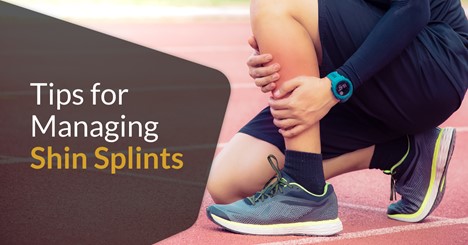If you’re a runner, you know the pain of shin splints. Shin splints are a common injury among runners and other athletes. Shin splints occur when the muscles and tissue in the shin become inflamed. The pain is usually located along the front of the shinbone. Shin splints can result from overtraining, improper alignment of the foot, and weak muscles. Treatment for shin splints typically includes rest, ice, and rehabilitation exercises.
This condition can be frustrating and make it difficult to continue your routine. Fortunately, there are some things you can do to reduce the symptoms and get back to your running program.
Here, we’ll discuss some tips for managing shin splints. Keep reading for advice on easing the pain and getting back to your workouts.
What are Shin Splints and What Cause Them
Shin Splints occur in muscles in the lower legs. The pain is usually felt on the outside or the front of the leg, and it can be a chronic problem. Shin splints are normally caused by continuous trauma to the same area, such as when athletes frequently over-extend their shins with each step or when weightlifting or jumping exercises are done incorrectly. It is believed that a significant cause of shin splints is muscle imbalance.
Prevention Tips for Shin Splints
In case you suffer from shin splints, then there are some things that you can do to help prevent them from happening. Some prevention tips for shin splits include:
Stretch your Calves and Hamstrings
Tight calf muscles mainly cause shin splints. Tight calf muscles restrict the muscle-tendon unit from lengthening properly. Over time, this can cause “micro-tears” in the muscle fibres, leading to pain and inflammation. Stretching your calf muscles will allow the muscle to stretch out, increasing blood flow to alleviate pain caused by inflammation.
Stretch your calf muscles by placing one leg up on a chair or table and bending your foot as close as possible towards you as you push your heel back towards your buttock.
Warm-up Before you Work Out
A warm-up is a must before you start your workout routine. It prepares your body for the upcoming activity and helps reduce the risk of injuries. Warm-ups also help increase your performance and make your muscles work more efficiently. Since shin splints are caused by your muscles not being conditioned for the activity you’re doing, it’s important to warm up before you work out.
Take Breaks During Long Workouts
If you have a strenuous exercise routine, take small breaks to save yourself from shin splints. This can be done by applying a 10-minute break after a two-minute one-legged exercise each time you switch legs. During your breaks, you can drink water, eat a light snack, or relax for a few minutes.
Exercise on Softer Surfaces
Decrease the risk of shin splints by taking a break from running on harder surfaces and switching to softer surfaces, such as grass. Shin splints can be caused or intensified by exercising on hard surfaces. If you have problems with shin splints, try walking for a while and give your legs a break from running.
Strengthen your Hip Muscles
Strengthen your hip muscles to help with shin splints. Imbalances in your muscles cause shin splints. They can be very painful and cause you to stop working out altogether. Strengthening your hip muscles will enable you to work out more, gradually taking the load off your shins. Not only will this strengthen your shins, but it also lengthens them for even distribution of pressure on the lower legs.
Treatment Options for Shin Splints
There are a few treatment options for shin splints, including:
- Active Rest: Changing or modifying your activity temporarily.
- Ice: Applying ice to the shins can help to reduce inflammation and pain.
- Compression: Wrapping the shins with compression bandages can help to support them and reduce swelling.
- Elevation: Elevating the legs can also help to reduce swelling and pain.
- Medication and massage therapy: In the most severe cases, a doctor may prescribe anti-inflammatory drugs to ease the pain, and massage therapy from a professional physiotherapist may also help.
Tips to Prevent Reoccurrence of Shin Splints
- Wear the appropriate footwear for your activity.
- Make sure to stretch and warm-up before participating in any physical activity.
- Take a break if you start to feel pain in your shins.
- Ice your shins after activity to help reduce swelling.
- When you are resting, raise your legs to improve blood circulation.

